Is Your Most Urgent Task That Important?
I guess you have a lot of things on your to-do list that stress you out. I also guess you sometimes find it hard to prioritize between them
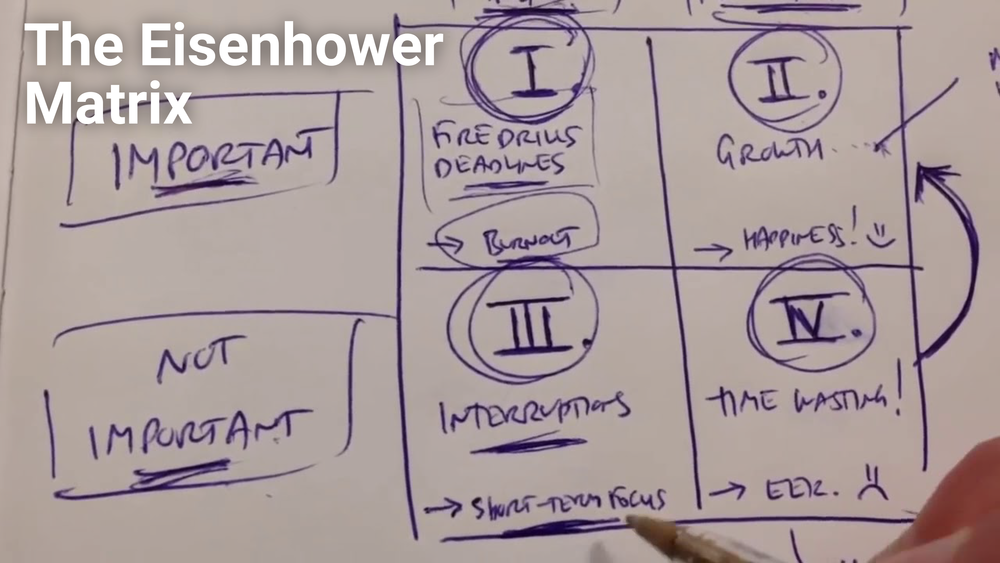
We’re going to take another look at the famous Eisenhower Matrix. I am going to teach you to apply it right. So that you know exactly what to prioritize in your daily work.
The Eisenhower Matrix was developed a long time ago, when Eisenhower was a general and when he was President. He had in his executive function so many to-dos to worry about that he had to find a method to prioritize what was most important.

In order to do that, he realized our brain often tricks us into thinking that urgent things are actually important things. Distinguishing between those is the very core of this famous Eisenhower Matrix.
Eisenhower suggest to have one dimension that says what is “important,” what is “not important” on the vertical dimension, and then on the horizontal dimension to distinguish between “urgent” and “not urgent.”
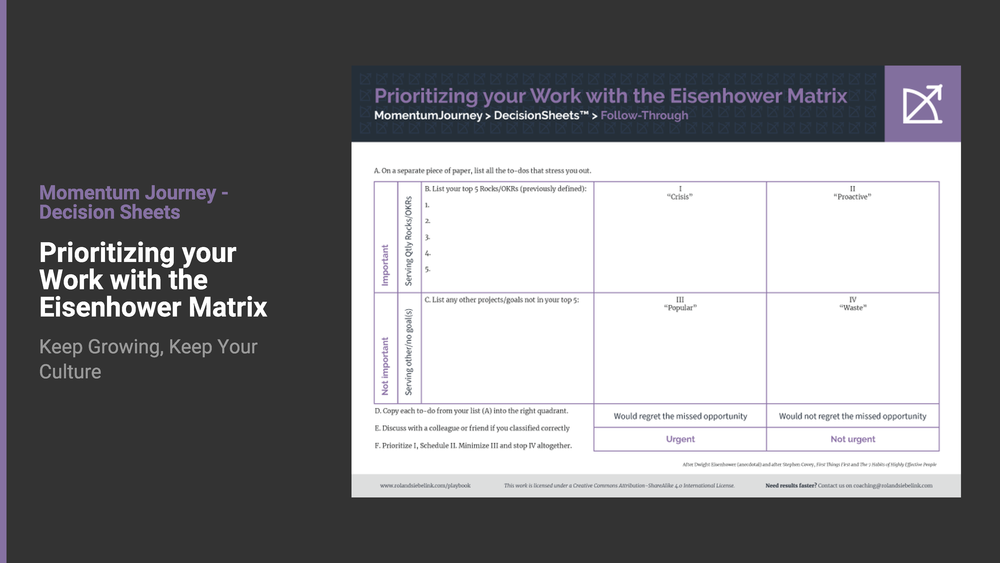
The tasks that are both important and urgent need to be done right away — we call those “crisis tasks”.
If they are important but not urgent, we should focus more of our time on them. We call those “proactive tasks”. Eisenhower suggests to schedule these for a time when you get to them.
What you should focus less of your time on are the tasks that are urgent but not important. I call these “popular tasks.” Making yourself popular with everyone else, but not actually serving your own goals.
Quadrant four is the “waste tasks,” the tasks that are neither urgent nor important.
Everyone asks, why would I even think about doing that? But if you spend too much time on Facebook or any other social medium, or gaming, or the water cooler, or watching TV/watching Netflix, then you can imagine that there is indeed some time that we spend on wasteful tasks.
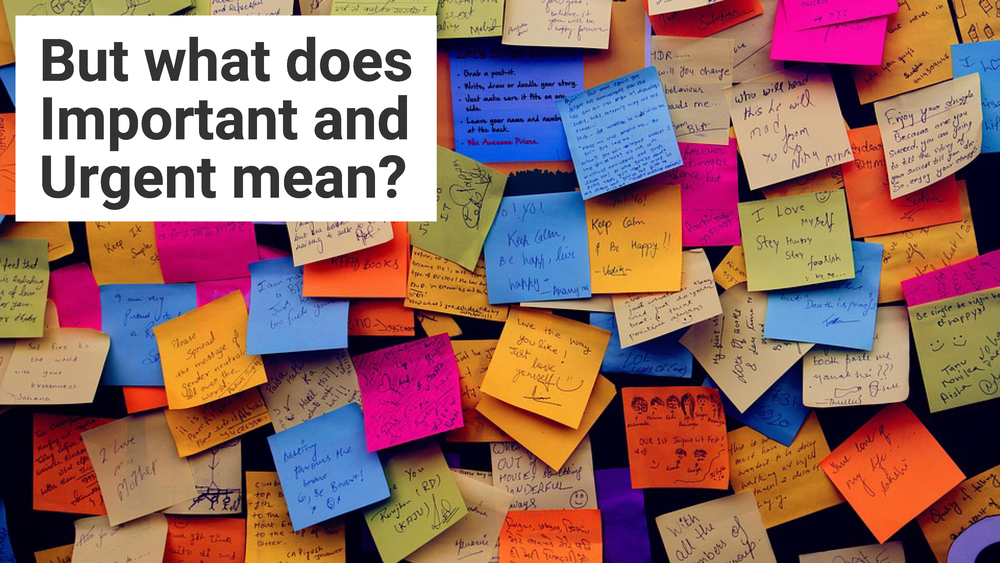
Now what makes this matrix so difficult to apply?
It’s that same core problem.
People find it hard to distinguish between what is important and what is urgent. So to add a little twist, I decided to “pre-define” for people what is important and what is urgent.
On the important side, let’s define important as something that serves your goals.
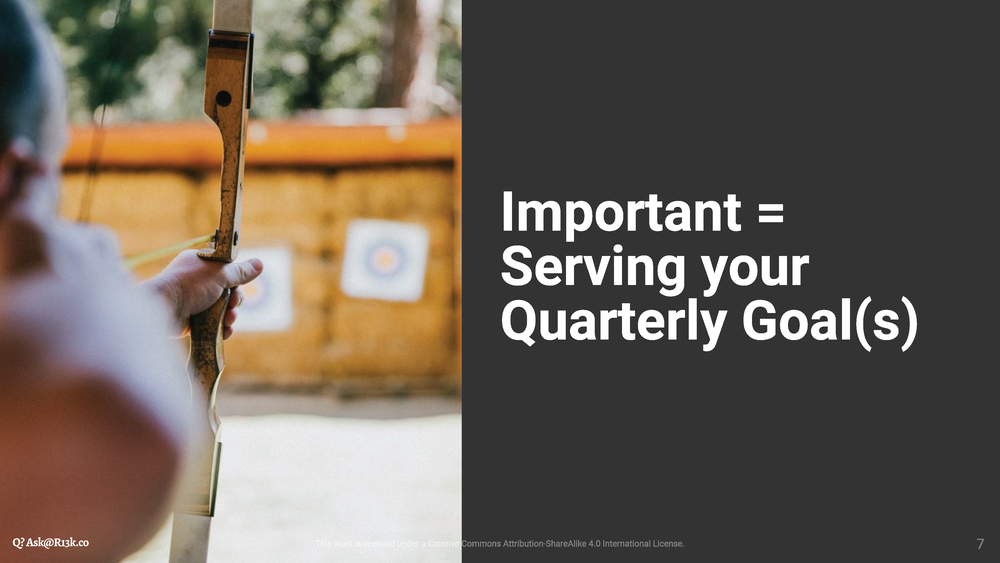
To be more precise: something that serves your next quarterly goals. Could be quarterly rocks, could be quarterly OKRs, whatever goals you have set for yourself.
I’m just assuming you have been diligent to set yourself maximum five. Anything that serves one of these five goals is an important task. Anything that doesn’t is not an important task. Very simple, right?
Now on the urgent side, what does urgent mean?
I don’t like to define urgent in terms of “is somebody asking me for it?” Because that is a very tricky thing for our brain. Our brains should be taught not to listen only to what other people are asking from us, but to think of tasks in its own urgency terms.
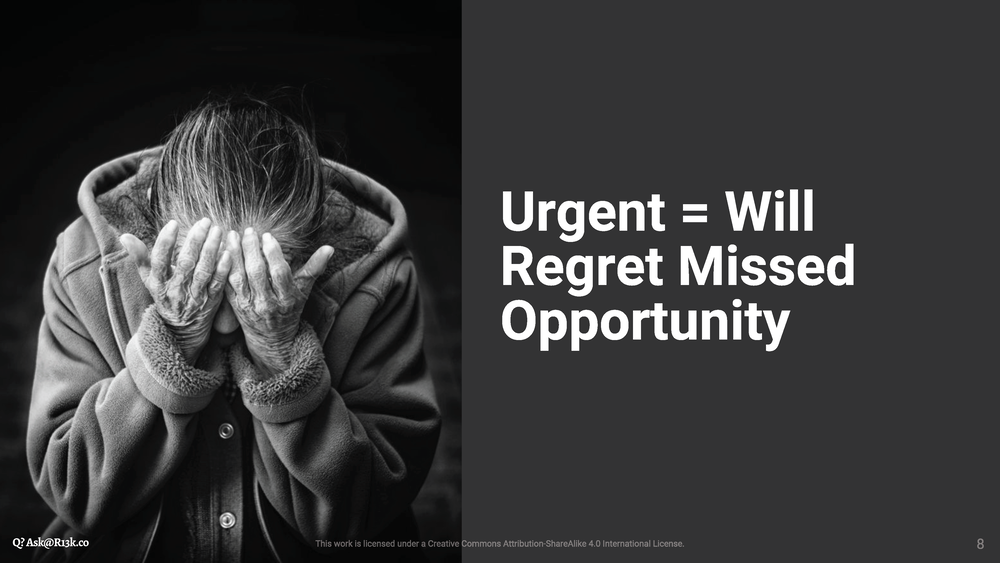
If something is urgent, to me it means: I would regret the missed opportunity if I did not follow up on it. If I would not regret the missed opportunity, I do not find it urgent.
For example, answering to that Facebook post. If I do not do it today, then of course there is no point in doing it tomorrow. But would I regret the missed opportunity? I guess not. So it is not really urgent. That is why it probably fits in that waste bucket.
So this is how we go about it. Before even filling anything out in this particular DecisionSheet, start with a separate piece of paper.
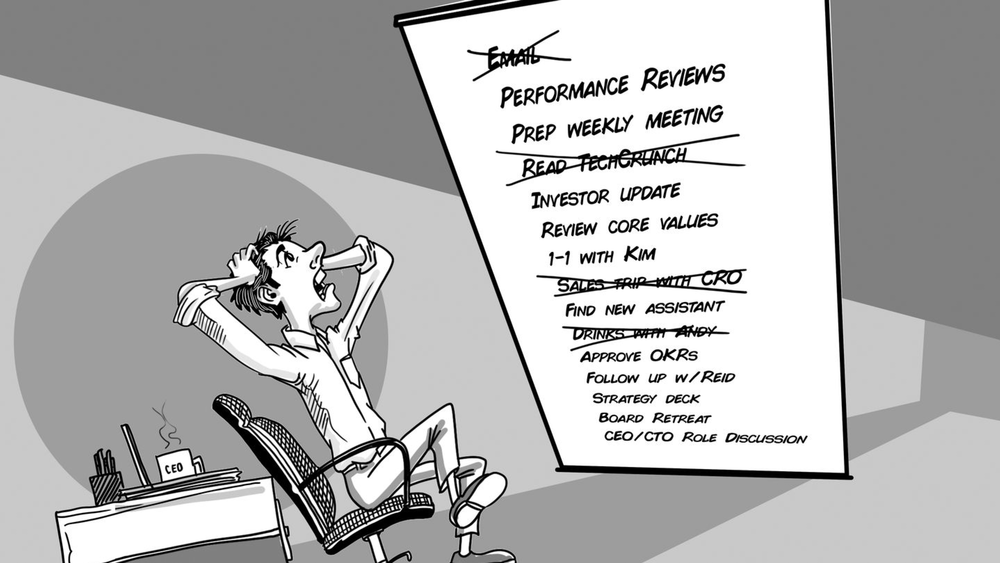
List all the to-dos from the top of your head that stress you out. Do not look at your todo list, just list from the top of your head what stresses you out. Most people will come spontaneously come up with 10 to 20 tasks.
Put that sheet aside and in quadrant B, list your top five rocks or OKRs or goals as previously defined. We have already mentioned: do not have more than five, otherwise you’re doing something wrong with your prioritization.
In the other quarter and below, list all the other projects or goals that are not in your top five. So anything else that’s come up, something more urgent, a personal thing that may not have been in your goals yet needs to go there.
Copy from your separate piece of paper: each todo from that list into the right quadrant. One, two, three, four, on the right.
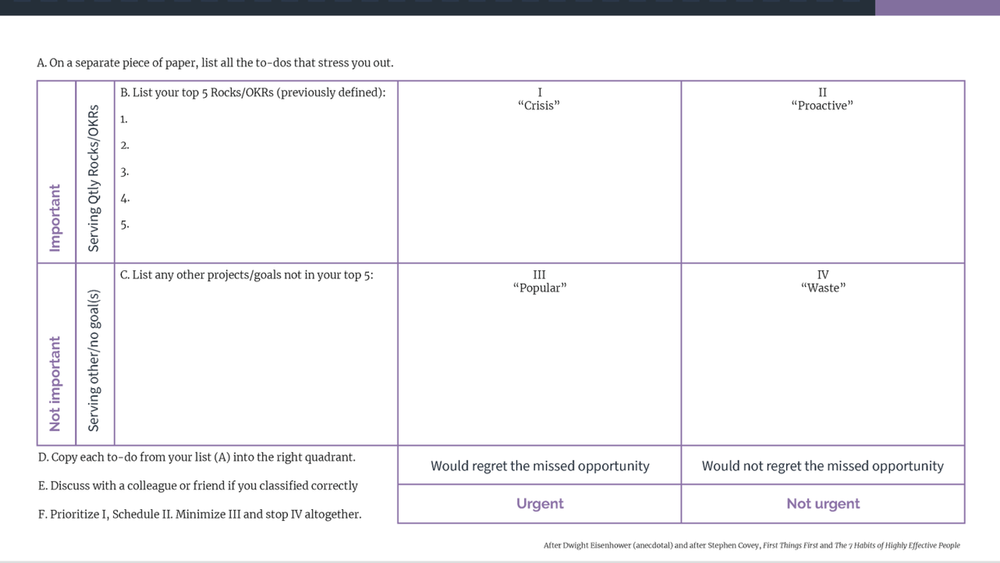
Is it truly urgent and truly important? In the sense that you would regret the missed opportunity? And you would miss serving your quarterly rocks? Then it’s a crisis to do (quadrant I).
If you would not regress the missed opportunity, but it would still serve your rocks? Then it would be a proactive task, so quadrant II.
If you would regret the missed opportunity, but it’s not serving your goals, then think of it as quadrant III.
If you wouldn’t really regret the missed opportunity, neither would you fail to serve any of your key goals, then it’s a waste task and you can put it in quadrant IV.
Prioritize quadrant I. In other words, focus on the “crisis tasks” first. Those are ones that need resolution right now.
Schedule quadrant II in your calendar, hopefully soon enough so that you get to it. And don’t forget to follow up on them.
Minimize the tasks that are in quadrant III. They are popular. That means you probably want to do some things like your boss’s asking for something, but try to do the minimum possible in order to get it done without getting more and more questions about it. Sometimes it’s good to do something in a minimal fashion so that there’s no questions asked.
And finally, quadrant IV should be clear. Stop these altogether. If you’re worried that you don’t have time for relaxation, well actually relaxation should be a proactive task, right? But then think of true relaxation. Don’t hang around on Facebook or binge watch Netflix.
But think of healthy relaxations such as going for a run or maybe sleeping more. Those things would certainly fit for me in the proactive quadrant (II).
So this is how you can reduce a list of 10 to 20 tasks that stress you out into what are the true crisis tasks that need attending. Now, what are the things you can schedule and get to later or they’re the popular tasks that you should absolutely minimize and what are the wasteful tasks that really, when you think about it, do not serve any purpose.
